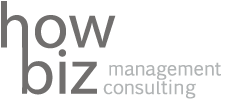Balancing the social and transactional aspects of a collaborative improvement relationship
Abstract
It has long been recognized that continuous improvement is important for individual companies to sustain and even improve their competitive position. Competition is increasingly moving to the level of groups of companies, for example organized in extended manufacturing enterprises. This means that inter-organizational continuous improvement or, as we prefer to call it, collaborative improvement, is becoming increasingly important. Among the enablers identified in the collaboration literature are transactional and social aspects of the relationship between the parties involved. In this paper we report a study of the efforts of three dyads involving one system integrator and three of its suppliers to get collaborative improvements going between the dyadic partners. The results seem to confirm that a balance between transactional and social aspects of the relationship between the partners involved is a prerequisite for successful collaborative improvement.
Building strategic supplier collaboration through gaming
Abstract
Strategic supplier collaborations in inter-organizational environments have shown increasingly important. When building a strategic collaboration, such as It-implementations, difficult issues come to surface e.g. human and technical difficulties. The focus of this article is a game developed to visualize these human factors to students with a theoretical and practical background, and by this the students will be equipped to plan and handle such a process in reality. The game is developed as a participating role game and based on an empirical documented case. The article has a practical focus/contribution and therefore the case is described and discussed in detail.
Factors affecting the development of collaborative improvement with strategic suppliers
Abstract
Competition is moving from the level of individual firms to that of supply chains and networks. Consequently, formerly internal management systems and concepts have to be externalized as well. This includes continuous improvement. The research presented in this article was aimed at increasing the current understanding of the process of developing collaborative improvement in extended manufacturing enterprises (EME). Theory suggested a number of factors to affect that process. Based on action research of a Danish EME involving four companies, a number of additional factors were identified. Not only do these factors influence each other, they also strongly affect the development of collaborative improvement.
Forbedring af produkt og proces gennem kunde-leverandrsamarbejde
Abstract
Artiklen baserer sig primært på erfaringer ved gennemførelse af det 3-årige projekt CO-IMPROVE (Collaborative Improvement Tool for the Extended Manufacturing Enterprise) under EU’s 5. rammeprogram. Projektet begyndte i 2001 og havde til formål at udvikle en forretningsmodel for samarbejdet, assisteret af et web-baseret softwaresystem, som understøtter opsamling, opbevaring, genfinding, overførsel og udbredelse af information generelt gennem det løbende forbedringssamarbejde, samt implementeringsguidelines, som understøtter ovennævnte forretningsmodel og softwaresystem.
Implementing collaborative improvement top-down bottom-up, or both?
Abstract
The research presented in this article was aimed at increasing the current understanding of the process of developing Collaborative Improvement (CoI) in Extended Manufacturing Enterprises (EME). Based on action research in three EMEs involving a total of 13 companies from five European countries, the study identifies three different implementation approaches. The bottom-up learning-by-doing approach starts at a practical level, with simple improvement activities, and aims at gradually developing a wide range of CoI knowledge, skills and initiatives. The top-down directive approach starts with aligning the partners’ CoI objectives and an assessment of their collaboration and CoI maturity in order to provide a common platform before actually starting improvement activities. The laissez-faire approach builds on shared goals/vision, meetings on equal terms and joint work, in a non-directive and non-facilitated way, though. The article demonstrates how and why the different approaches have different effects on the development of collaborative improvement.
Industrirapport ERP
Abstract
Denne rapport er en samling af industrirettede artikler der er publiceret i erhvervsmagasiner, ledelseshåndbøger og tidskrifter i perioden foråret 2000 til efteråret 2002. Artiklerne er en del af udbyttet af forskningsprojektet, implementering og brug af ERP systemer, IMERAS
Løbende forbedringer en grundsten i udvikling
Abstract
At skabe en ny virksomhedskultur, hvor løbende forbedringer er en grundsten, tager mange år og er ensbetydende med hårdt arbejde, og det er en nødvendighed at gøre op med traditionelle organiseringsmønstre, hvor det udelukkende er mellemledelsens opgave at tage sig af de aktiviteter og forhold, som strækker sig ud over selve produktionsarbejdet. En sådan kulturændring skaber mange konflikter undervejs, men resultater viser, at det er kampen værd.
Løbende forbedringer i netværk kræver samarbejde
Abstract
I de fleste brancher flytter konkurrencen sig for tiden mere og mere fra konkurrence mellem virksomheder, til konkurrence mellem kæder eller netværk af virksomheder. F.eks. konkurrerer Toyota sammen med dennes leverandører mod General Motors og dennes leverandører eller Sauer-Danfoss sammen med udvalgte leverandører mod Bosch og denne virksomheds leverandører. Hvorfor sker dette?
The influence of learning in collaborative improvement
Abstract
Collaborative improvement is a purposeful inter-company interactive process that focuses on continuous incremental innovation aimed at enhancing the partnership’s overall performance. Considering that in such an environment the capability to learn jointly and individually is crucial, this paper takes a learning perspective on collaborative improvement and addresses the question: How do organisational learning and collaboration interplay and affect improvement performance? Based on an analysis of three dyads of the same Extended Manufacturing Enterprise, this paper concludes that a robust learning environment (willing and able to learn) creates operational, relational and learning outcomes – a self-reinforcing process. A weak learning environment (some willingness but limited ability to learn) creates operational outcomes but is sensitive to ‘accidents’ and thus at risk of actually producing negative relational and learning outcomes. A ‘blocked learning’ environment (no willingness to learn) may create good operational outcomes, but will not produce learning and relational outcomes. Consequently, it is doubtful if such situations are sustainable.
